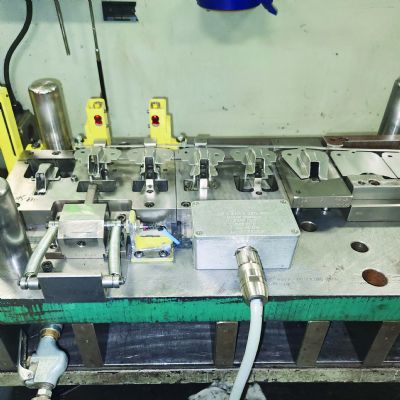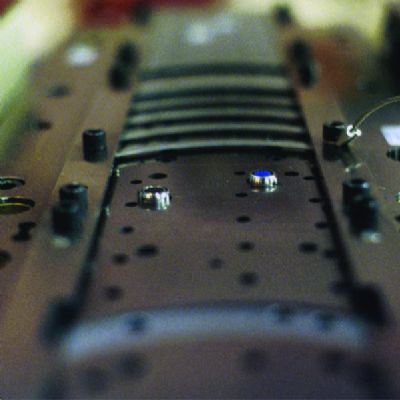Retrofit your Press, Before it Quits
November 1, 2009Comments
Information provided by Bill Savela, Delta Computer Systems, Inc., Battle Ground, WA: 360/254-8688; www.delta-motion.com
Retrofitting the control system on an existing press can increase performance and prolong the life of mechanical and power components at a fraction of the cost of a new machine. The benefits of upgrading a press’s electronic motion controller:
• Higher throughput, by reducing the time it takes for an axis to move and stabilize at the new position and by supporting synchronization and gearing of multiple axes to increase the performance of complex motion systems.
• Improved quality thanks to more precise positioning and advanced capabilities such as pressure control.
• Reduced changeover time through the use of recipes—complete motion sequences downloaded to reconfigure a machine.
• Reduced maintenance costs due to reduced shock and vibration provided by smoother motion.
When retrofitting equipment, the plant engineer or systems integrator must design around equipment that is either mandated by the end user (such as a certain brand of PLC) or would be cost-prohibitive to replace. The engineer selects a motion controller that can be adapted to the application, replacing only those components required to achieve specified goals for performance or productivity improvement. To do so, he must consider these factors:
• Communications support. An ideal motion controller for retrofit applications can support a range of communications interfaces and protocols for connection to the host system. If the machine does not use a modern bus such as EtherNet/IP or Profibus, consider retrofitting the bus as well to minimize maintenance costs.
• Transducer connectivity options. For efficient retrofit implementation, a motion controller must support direct connection to position feedback devices. Also, since the ability to control pressure or force as well as position often is key to improving productivity and quality, the motion controller should provide interfaces to pressure or force transducers.
• Advanced programming options. Machine productivity gains may require completion of complex motion sequences, so the controller software should be easy to program. The controller’s functional repertoire should support powerful operations such as running multiple simultaneous PID loops employing full parameter sets including feed-forwards, and high-level instructions such as higher-order equation interpolation. A motion controller that can be programmed with high-level commands allows the project to be completed in significantly less time than with low-level machine commands, reducing costs and improving ROI.
New motion controllers support the synchronization of multi-axis motion systems. Rather than hardwiring a machine to run at a certain speed, by enabling the motion of slave axes to follow that of master axes the overall throughput of a machine may be varied and increased without risking jams or malfunctions.
Finally, using a motion-control software simulator, the system integrator can test at his desk and prove out the motion system before plugging the controller in. This minimizes system downtime and ensures that correct hydraulic component sizing can be verified in advance.
Delta Computer Systems, Inc.: 360/254-8688; www.deltamotion.com
See also: Delta Motion
Technologies: Pressroom Automation, Sensing/Electronics/IOT
Comments
Must be logged in to post a comment. Sign in or Create an Account
There are no comments posted. Sensing/Electronics/IOT
Sensing/Electronics/IOTPress Controls and Sensors Series Part 3: Best Practices for...
Jim Finnerty August 31, 2024
Work-Instruction Software Enables Workers to Activate, Monit...
August 5, 2024







